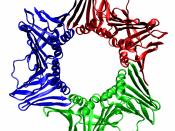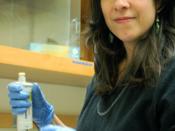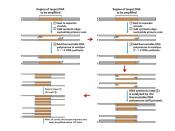Dr. Kary Mullis first described polymerase chain reaction (PCR) in 1983, and won the Nobel Prize in chemistry in 1993 for his work performed on PCR. Dr. Mullis considered PCR a concept rather than a technique, but the most important aspect to his concept is that PCR literally can pull out a small piece of DNA from its context and amplify it. PCR may have a relatively recent front on science, but it certainly has brought forth a new horizon and led to advances in many frontiers including forensic medicine, molecular science, genetic disease, and many areas of medicine.
PCR is a key part of molecular genetics that permits the analysis of any short sequence of deoxyribonucleic acid or DNA. It is beneficial to have a brief overview of genetics to gain an appreciation of the relationship that PCR plays in this field of science. Molecular genetics is basically the study of the genes, which are the molecules that pass genetic information along in chains of polymers of DNA.
The four building blocks of DNA are guanine (G), adenine (A), thymine (T), and cytosine (C). These are formed in a unique order or code for all of the genes in every living organism. Genes determine hereditary traits such as hair color, eye color, weight, height, and similar aspects. Genes instruct body cells to make specific (receptor) proteins to carry out certain functions, but mutations can occur which change the sequence in the DNA of the gene, hence the protein and body would not properly function. Scientists have spent many years of research determining that such mutations and changes in the receptor proteins and genetic code can occur. It is because of the research, laboratory work, and new techniques, such as polymerase chain reaction, that have come along that have helped...


